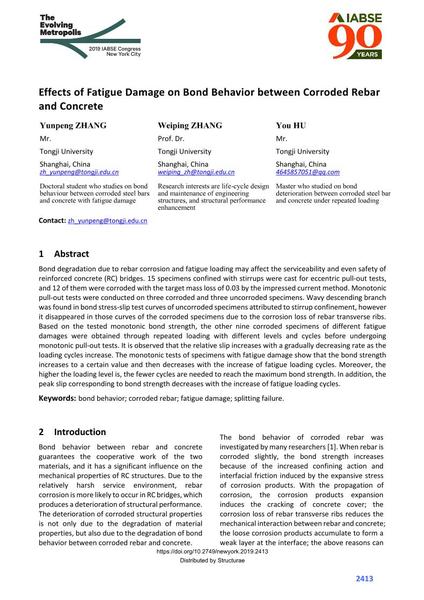|
Abstrait:
|
Bond degradation due to rebar corrosion and fatigue loading may affect the serviceability and even safety of reinforced concrete (RC) bridges. 15 specimens confined with stirrups were cast for eccentric pull-out tests, and 12 of them were corroded with the target mass loss of 0.03 by the impressed current method. Monotonic pull-out tests were conducted on three corroded and three uncorroded specimens. Wavy descending branch was found in bond stress-slip test curves of uncorroded specimens attributed to stirrup confinement, however it disappeared in those curves of the corroded specimens due to the corrosion loss of rebar transverse ribs. Based on the tested monotonic bond strength, the other nine corroded specimens of different fatigue damages were obtained through repeated loading with different levels and cycles before undergoing monotonic pull-out tests. It is observed that the relative slip increases with a gradually decreasing rate as the loading cycles increase. The monotonic tests of specimens with fatigue damage show that the bond strength increases to a certain value and then decreases with the increase of fatigue loading cycles. Moreover, the higher the loading level is, the fewer cycles are needed to reach the maximum bond strength. In addition, the peak slip corresponding to bond strength decreases with the increase of fatigue loading cycles.
|

